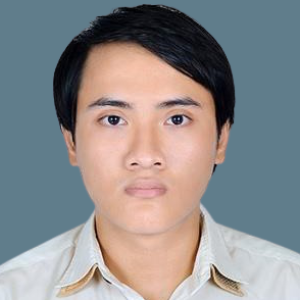Title : Ultrasound-assisted copper leaching from copper slag
Abstract:
Copper slag (CS) is an industrial by-product from the pyro-metallurgical process of copper. Even though CS is a nonhazardous material, the enormous yearly production (2.2 tons of CS for every ton of copper produced) makes it to be considered as a serious concern in environmental issues. From that purpose, the present research is to focus on the copper extraction from CS with different factors by high-power ultrasound (US). This US extraction process includied leaching time, temperature, leaching solution, acid leaching concentration on the process. In the process, the particle size of CS used during this experiment was 120-150μm containing about 1.5 % copper loading. For the copper extraction, the solid powder was mixed with several aqueous solutions such as HCl, H2SO4 and HNO3 in the combination of 5 % H2O2 and NaCl 5% with the 1:20 ratio (10g-200ml). Then, the obtained pastes were stirring from 30 to 240 minutes at 28 kHz – 600W of US. After the leaching experiment, the mixtures were centrifuged and the obtained liquid was filtered. ICP-OES was used to identify the quality and also quantity of the ion in the solution. As results, the leaching efficiency increased significantly in comparison with the conventional leaching. When the sample was stirred in 30 minutes using 1M HCl aqueous solution, the leaching efficiency was increased from 9.3 % to 25.8 % with the combination of US. Meanwhile, it was found that longer leaching time was required for the conventional leaching (28.4% at 4 hours). Moreover, with the addition H2O2 solution, the leaching was enhanced, showing to be 41% when 2M HCl was used. In the case of HNO3 (2M), however, with the presence of H2O2 the leaching was increased from 31% to 36% in 1 hour with US. Further research about the US effect on the leaching efficiency was carried on by using coumarine and umbelliferone to confirm the appearance of the OH- radical which was formed by sono-chemical effect of the US exposure.
Audience Take Away:
• Audience will learn basic concept about ultrasound in general and effect of the extraction process, leaching mechanism and some information about the situation of copper slag in Japan and over the world.
• On the copper extraction process, the present research can provide for audience some alternative solution in generating OH- radical in US condition, how to identify the OH- radical generating effect using coumarine, umbelliferone and KI.
• On the process with and without the presence of US, the effect of the other factors like treatment temperature, leaching solution, and additive chemical to be effective of leaching the copper extraction.



